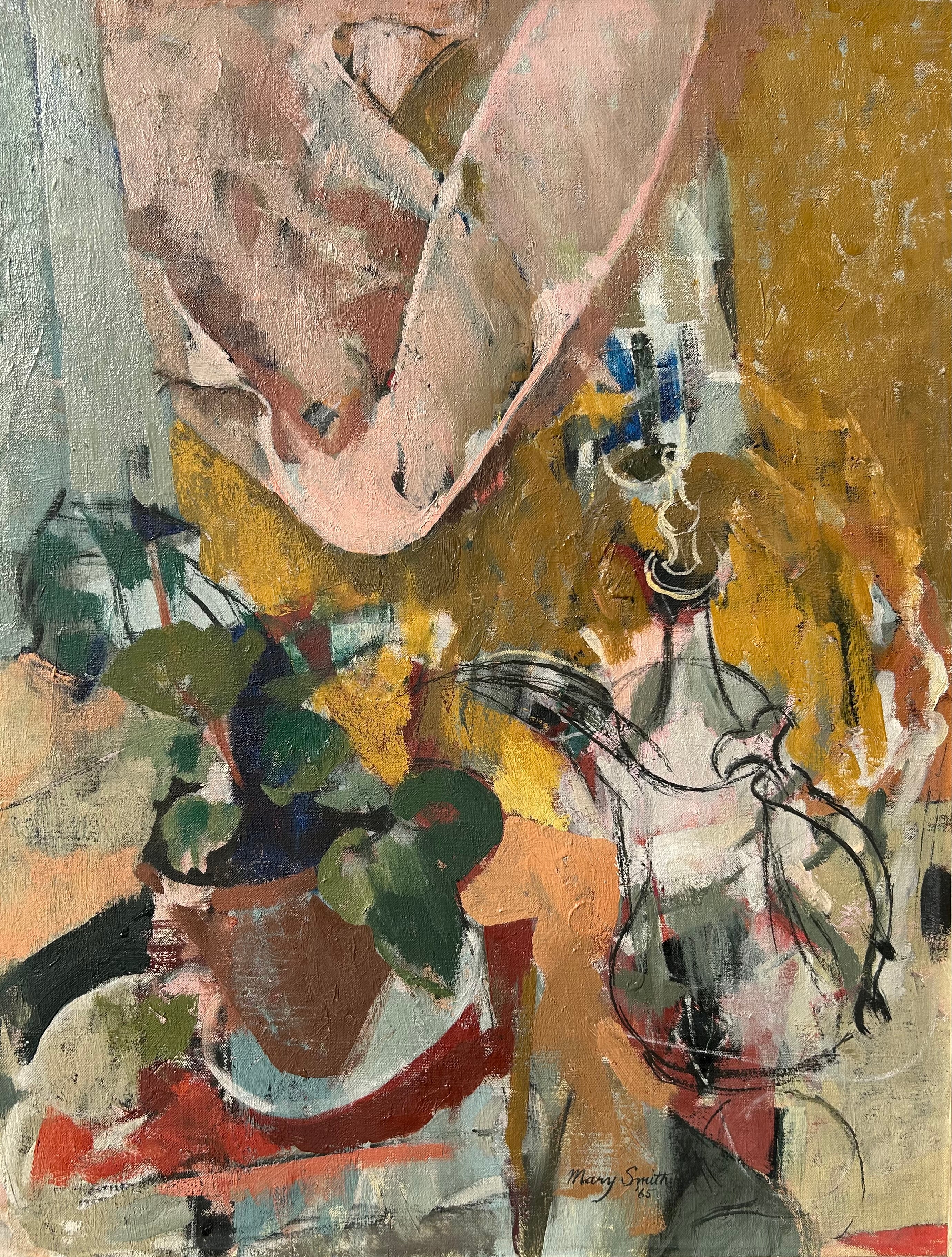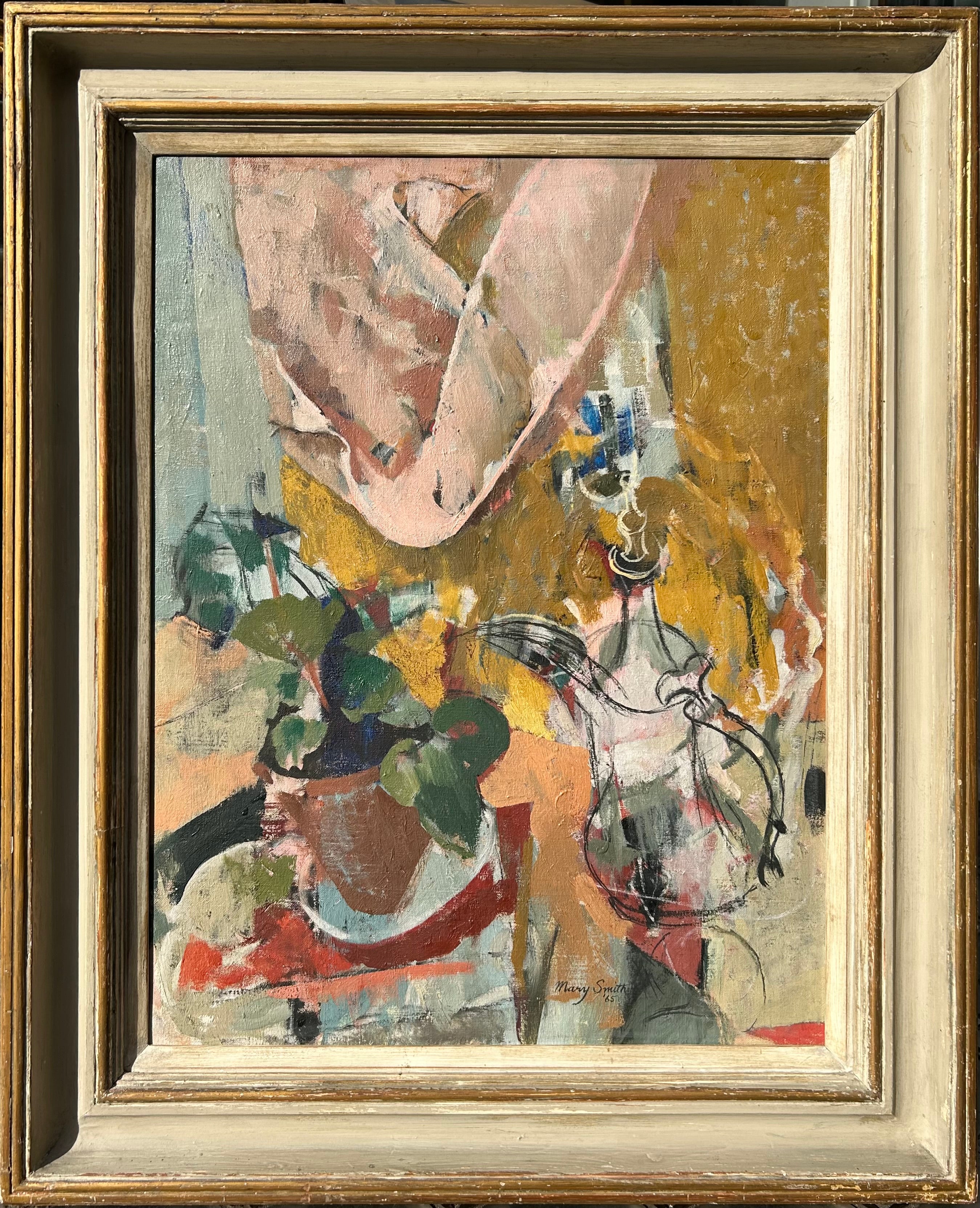

Mary W Smith
Coffee Pot
Oil on canvas, signed lower right & dated (19)'65'
Image size: 25 ½ x 19 ¾ inches (65 x 50 cm)
Original frame
Provenance:
Royal Academy Exhibition, 1965
Collection of Dr Kenneth Graham
This abstract still life consists of two main elements; a house plant with rich green leaves, and the titular coffee pot. The shape and design of the coffee pot is instantly recognisable as Persian, and was likely a keepsake from the artist’s time in Iran.
One of the most striking features of this image is the use of colour. The painting is a chromatic explosion, using large blocks of colour to denote different surfaces - the pale blue in the background as a wall, the pink and yellow as a chair, and the light brown as a table surface. Against these blocks, the coffee pot and plant stand out. In particular, the coffee pot’s colouration is striking: it is painted white, indicating how the light is playing over its metallic surface.
This painting was exhibited at the Royal Academy in 1965, label verso.
Mary Winifred Smith
Mary Winifrid Smith was born in 1904 in Bury, Lancashire. She initially studied at her local high school before her artistic talent was noted, and she was sent to Bury Art School - from here, she was accepted into the Slade School of Art in 1923 and studied under Henry Tonks and Wilson Steer. She exhibited at the New English Art Club, won First Prize in the Slade Show in 1926 and was invited - although, did not accept - to assist Rex Whistler in decorating the Atlantic liner Queen Mary.
Worried about their daughter’s relocation to London, Smith’s parents asked a distant relation to supervise her - Sidney Smith, who worked in the British Museum’s Department of Egyptian and Assyrian Antiquities. The two were married in 1927, and their first child arrived the following year.
In 1928, Sidney obtained a job at the Iraq Museum and relocated there - Smith went with him, leaving their young child in the Norland Nursery. Whilst in Iraq, Smith painted scenes of Baghdad, one of which was gifted to her friend Agatha Christie. After three years in Iraq, Sidney was recalled to the British Museum to become Keeper of Egyptian and Assyrian Antiquities, and so the couple moved back to London, having their second child two years later.
Smith was encouraged to paint by her husband and did so, all whilst raising two children and caring for her elderly parents. She exhibited at the Royal Academy, the New English Art Club and the London Group, and had a joint exhibition with Katherine Hartnell and Lilian Whitehead at the Beaux Arts Gallery in 1934.When the Second World War broke out, Smith continued to work as an artist whilst also volunteering for the war effort. Many of her works were destroyed in a bomb blast in 1941, which also damaged their house so substantially that Smith and her family had to move into accommodation in the British Museum.In 1948, Sidney retired and became a professor, and the family moved to South Kensington. Despite having little room to do so, Smith continued to paint – notably still-life and portraits - and exhibited at the Women’s International Art Club. In 1955, Sidney retired entirely and the couple moved to Barcombe, Sussex. Smith continued to paint, but exhibited sparingly. After the death of her husband in 1979, Smith moved to Australia to be with her daughter, and passed away in 1992.



